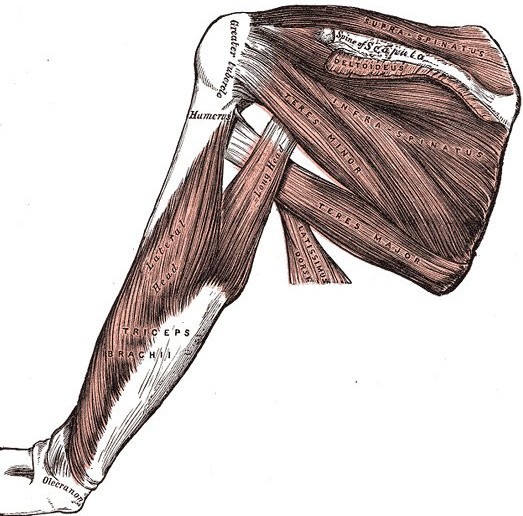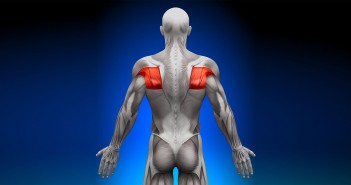The rotator cuff is a group of muscles and their tendons that act to move and stabilise the shoulder (glenohumeral) joint.
These muscles connect the shoulder blade (scapula) to the upper arm (the head of the humerus), forming a cuff at the shoulder joint. They hold the head of the humerus in the small and shallow glenoid fossa of the scapula (the shoulder socket). The glenohumeral joint is sometimes described as a golf ball (head of the humerus) sitting on a golf tee (glenoid fossa).
The four muscles of the rotator cuff are:
- Supraspinatus, which abducts the arm.
- Infraspinatus, which externally rotates the arm.
- Teres minor, which externally rotates the arm.
- Subscapularis, which internally rotates the arm.
These four muscles, together with the coracobrachialis, deltoid and teres major, form the scapulohumeral muscles — a group of seven muscles that connect the humerus to the scapula. Other muscles that attach to the humerus and affect its rotation and stability are the latissimus dorsi and the pectoralis major.
During abduction of the arm, moving it outward and away from the trunk, the rotator cuff compresses the shoulder joint in order to allow the large deltoid muscle to further elevate the arm. Without the rotator cuff, the humeral head would ride up partially out of the glenoid fossa, lessening the efficiency of the deltoid muscle.
If you found this article helpful, please show your support by telling all of your friends about us. Thank you.
If you have any questions or comments about this or other articles on Golf Loopy, please send us an email.
You May Also Like…
Introduction to the Swing like a Champion System.
Overview of a Great Golf Swing, which summarises the correct movements in a great golf swing.
Golf Anatomy and Kinesiology, a collection of articles describing the roles of the muscles involved in the golf swing.
Internal and External Rotation of the Arms in the Golf Swing.
The Role of the Deltoids in the Golf Swing.
The Role of the Latissimus Dorsi Muscle in the Golf Swing.
The Role of the Pectoralis Major Muscle in the Golf Swing.
The Role of the Teres Minor in the Golf Swing.




